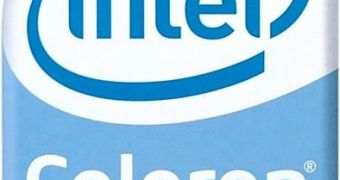Even though Intel has managed to replace most of its Westmere mobile processors with chips built on the Sandy Bridge architecture, there are still a couple of Celeron CPUs out there based on the older Penryn core, so the Santa Clara chip giant plans to release the Celeron 787 and 857 chips to take the place of these last two models.
Both of these processors are ultra-low voltage (ULV) parts, which means that their estimated thermal design power is rated at 17W.
As a result, their operating frequencies had to be reduced to levels that barely surpass the 1GHz mark, while the default clocks speed of the integrated graphics cores was set at 350MHz.
Starting with the more powerful option, the Celeron 857, this will include two processing cores that operate at 1.2 GHz, 2MB of Level 3 cache memory and a dual-channel memory controller which supports DDR3 speeds up to 1333MHz.
On-chip graphics unit includes only the most basic features (lacks even ClearVideo support), and it's clocked at 350MHz under normal operating conditions, while its maximum turbo speed is set at 1GHz.
The same base graphics operating frequency will also be used for the Celeron 787, but its maximum turbo speed is limited at 950MHz.
In addition, the Celeron 787 only includes a single processing core that is clocked at 1.3GHz as well as just 1MB of Level 3 cache.
As it’s the case with all the other Sandy Bridge-based Celeron processors launched by Intel, the 787 and 857 support a basic set of features, such as Intel 64 and virtualization, while more advanced technologies like Turbo Boost or HyperThreading were disabled.
The two ULV Celeron processors are expected to launch in the third quarter 2011. No firm release date was announced, but one source cited by CPU-World stated that these may launch as soon as next week.

 14 DAY TRIAL //
14 DAY TRIAL //